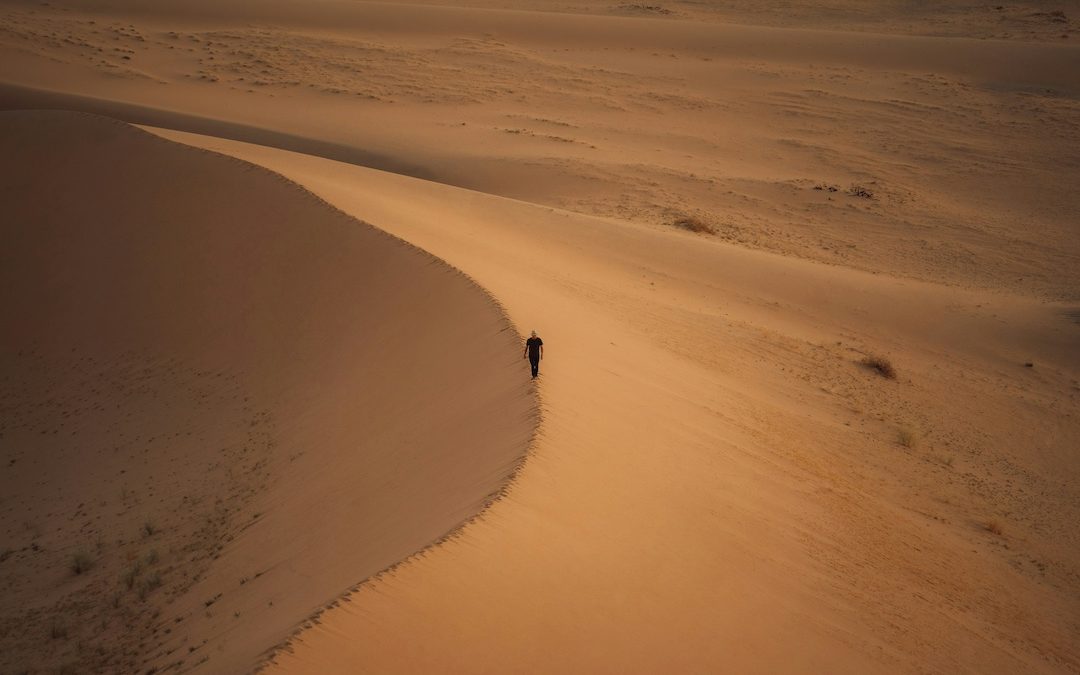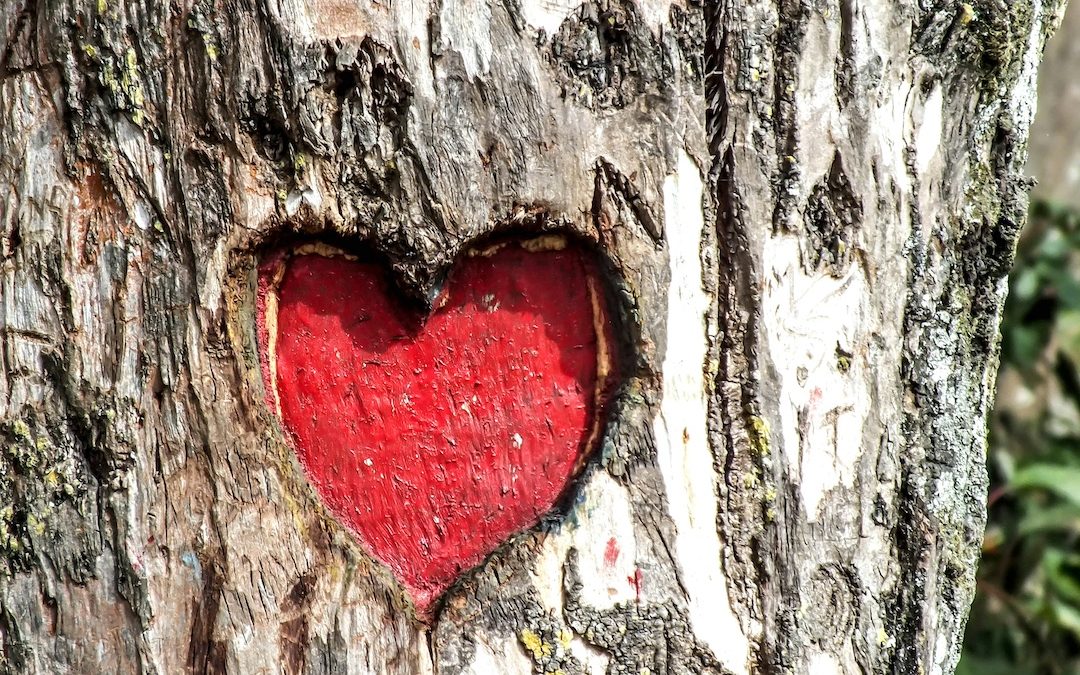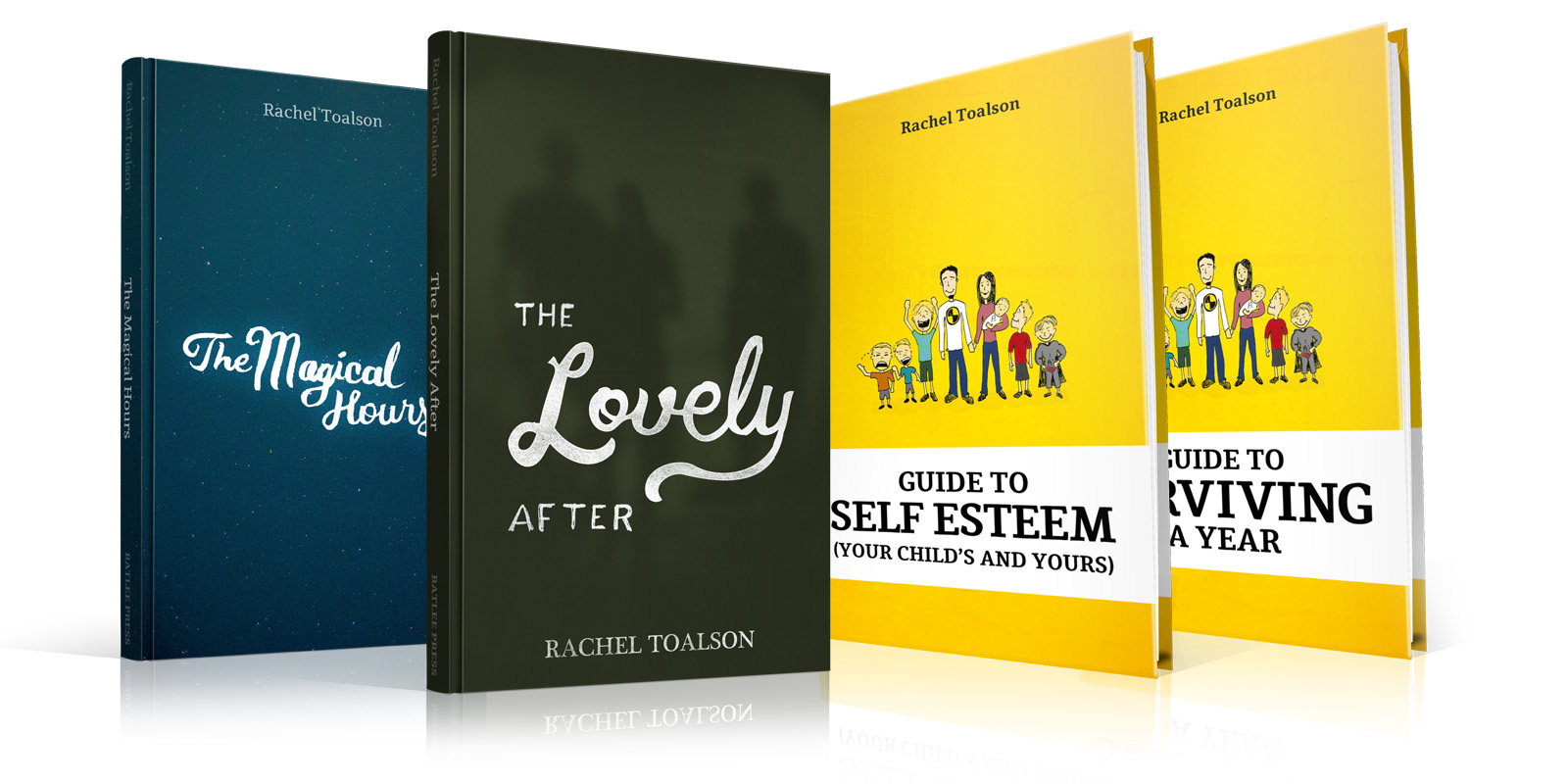
by Rachel Toalson | Wing Chair Musings
I’m the kind of person who thrives on solitude. Not all the time (that, I fear, would make me lonely). But sometimes.
I recently had a few days to myself, and I hadn’t even realized how much I needed them because of all the activity that comes from releasing a new book plus having kids home for the summer plus the regular speed of life.
Solitude revitalizes me. I use it to read, write, run, just stare into space.
Our modern lives are full of activity and people—not necessarily in-person people but online—and all of that can feel overwhelming. Sometimes I have to take time away from it all.
Summertime is challenging, because there are people everywhere. I don’t live in a big house, and now most of my kids are bigger than I am and take up more space. It’s practically impossible to find stillness and quiet, much less solitude.
But it’s necessary—for all of us.
Solitude can be uncomfortable for some people, especially at first. Without all the voices of other people, we can hear our thoughts really well. And that can be…unpleasant, depending on the day.
I recently watched a documentary on anxiety. In an anxious mind, like mine, there’s always chatter. It takes a lot of time to find quiet, and it rarely happens without solitude.
In solitude, the mind fills with a hundred things. It’s unsettling. At first. And then you reach the silence. A deep, inner silence (even if it’s not complete silence—it’s not for me). A place of knowing and understanding and clarity.
Gabriel García Márquez, a Columbian novelist and short story writer, once said, “The secret of a good old age is simply an honorable pact with solitude.” (He lived until he was 87 years old.)
I tend to agree.
Solitude, according to research, can reduce our feelings of stress and make us feel calmer. In solitude we can increase our self-knowledge and figure out our problems and think deeply about what’s going on in our lives and how to be a better human.
(A note here: Solitude is not synonymous with lonely. The reason I can be okay with and long for my solitude is because I have my people. So don’t cut yourself off from people just to find solitude; we need each other!)
Solitude increases our creativity, because it gives us space to breathe and think. It fosters a greater sense of intimacy and connection with others, contrary to what we may think about relationships (the old adage “absence makes the heart grow fonder” turns out to be true).
How much solitude is best for us?
That depends on the person. We all have to figure it out for ourselves. I spent a few days alone, and I felt completely renewed.
What should you do with your solitude? That’s completely up to you, too. Some of us can feel a little itchy with fifteen minutes all by ourselves and no one needing anything from us (myself included). So I’ve collected some of my favorite things to do with solitude (scroll down to the end of this email for the list).
In order to practice solitude, however long or short it may be, we have to prioritize it. The activity of a day eats away the hours. It’s gone before we know it—at least that’s how my life goes.
We might find we can better deal with the challenges our days often throw at us if we can just spend a little time by ourselves.
I hope you have a splendid month of finding moments of solitude.
What to do with solitude:
1. Read a book or write in a journal
2. Sit and stare into space (if it makes you cringe, set a timer so your brain knows it will end)
3. Just listen to your thoughts as they pass
4. Meditate
5. Do some candlelight yoga
6. Go to the library and browse books
7. Run or hike
8. Color
9. Play dress up for yourself
10. Cross a room doing forward flips like you used to do as a kid (just don’t pull any muscles)

by Rachel Toalson | This Writer Life
Some writers stay far away from personal experience when crafting stories.
Me? I like to toe the line. Most of my stories contain very specific pieces of my life. My first traditionally published book, The Colors of the Rain, included grandparents and an uncle and a real-life family tragedy. My second book, The Woods, was not my personal experience, but I drew upon real-life historical events—the Texas City Disaster. The First Magnificent Summer includes my experience starting my first period one thousand miles away from home while visiting my dad and stepmom after my parents divorced. And my most recent book, Something Maybe Magnificent, is a very close retelling of my stepdad’s and my story.
In Donald Maass’s book, The Emotional Craft of Fiction (which is one of the best craft books I’ve read, by the way), he says, “Writers have amazing personal stories. Sometimes they’re downright astonishing. What’s puzzling to me is that people with such rich experience to draw upon too often write stories far less dramatic than their own.’
Why is this?
I think sometimes we’re afraid to write our stories. We’re afraid to use the situations that caused us such turmoil and angst and all kinds of big emotions. But we felt those big emotions. And when we write about those big emotions, our readers will also feel them. That’s something worth considering.
What I’ve discovered as a writer of semi-autobiographical fiction is that often, sorting through those situations in my past—the ones that hurt me or the ones that threw me sideways or the big disappointments and setbacks—help me actually process through them in a healthy way. Write them into a better story, maybe. One of the most powerful things we can do in our lives is turning our experiences into a story—whether or not we share that story with the world. Psychology research shows that shaping our experiences into stories helps us process and heal from them.
Most of us have rich experiences that would make fascinating stories. Many times we think, No one else would be interested in this. But that’s just seeing through our foggy lenses. It may not be interesting to us, because we lived it. But it will definitely be interesting to others who haven’t lived it. Or others who have lived it; they’re grateful to know they’re not alone.
Of course we might not want to share every personal story we’ve lived. But some of them might be worth exploring, don’t you think?
Here are my best tips for doing that:
1. Make a list of all the significant events you can remember in your life so far.
I’m thinking high school trips where you fell in love (hello, Disney World band trip), the first week of college when you were trying to find your bearings. First love, first kiss, a marriage or engagement. Kids. Deaths. Divorce. That family tree project in third grade where you didn’t know anything about your family and could only trace back a couple of generations. The time your grandmother told you she liked you better when you ate.
(These are just my stories. I know they’re probably not yours. I’m just trying to get your brain working.)
Think about all those experiences that made an impact on you one way or another. They don’t have to be bad. They can be joyful, too. Though the disappointing and heartache-y situations make for better fiction. 🙂
2. Consider the question, If I had to write a story about my childhood, what would it be?
Or another: If I had to write a story about my young adulthood, what would it be. And: If I had to write a story about my life now, what would it be?
Sometimes just asking ourselves the question can unlock inspiration to draw upon for stories or writing pieces. For example, I had a string of months right after my oldest turned 13 when we couldn’t seem to have a conversation without an argument. He took everything I said the wrong way. I wrote a poem called, “I Am a Villain in His Story.” Because that’s very much how I felt. That led me to begin work on an adult novel about a mother exploring her relationships with her children and the myriad ways she lets herself down. It may or may not go anywhere. But it’s real-life inspiration.
3. Look back at old things.
After graduating high school, I spent my summer making scrapbooks of all four years of my high school education. These things are a treasure trove of what teenage Rachel felt was important to highlight in her life. Have I used them for some young adult story inspiration? Absolutely.
Journals, diary entries, old writings, yearbooks. Receipts, old emails, letters. Get your hands on anything that will tell you a little bit about your past life. Something more than your memory can tell you.
If you’ve been a diarist or journal keeper, these, too, can be spectacular treasures. When I was thinking back to my first love story (which I shared in the last email, if you want to read a teeny bit about it), journals were helpful for showing me just how melodramatic those first-love feelings can be. When you’re young and in love and that love is suddenly taken away, it’s devastating. It feels like life won’t go on (contrary to what Celine Dion sang the year of my first heartbreak). Like you will never feel that way about someone again. Like the world can’t possibly have another Bubba Loewe in it. (Yes, I dated a guy named Bubba, and I was completely smitten. I don’t even recall his real name.)
You never know what kind of inspiration you’ll find when you look back. So take out those old journals and start paging through your “important mementoes” drawer. Real-life stories can make lovely fiction.
When we write from real life, we don’t have to imagine emotions, because we lived them. We remember them. Or we’re still living them. And that makes a difference to readers. Because we remember the way books make us feel.
I hope you have a fantastic month of writing your stories—for yourself or for others.

by Rachel Toalson | Books
Here are five or so things worth sharing this month:
1. Reading (A): I just finished Emily Henry’s latest rom com, Funny Story, and thoroughly enjoyed it. Henry has a way with characters and romantic tension and is one of the master’s (in my opinion) in her genre. I also really enjoyed her Book Lovers and Beach Read.
2. Reading (MG): When I heard Dan Gemeinhart had a followup book to his The Remarkable Journey of Coyote Sunrise, I knew I had to read it. And Coyote Lost and Found was splendid. We get the same quirky characters (with a few added in) on a different roadtrip quest.
3. Watching: A couple weekends ago I watched the Max documentary The Fastest Woman on Earth, about professional racer and TV personality Jessi Coombs and oh my goodness was it fantastic. It’s a fascinating story about Coombs’s quest to break the land speed record and how speed racing is still a field of men. It includes information about one of the first women racers and daredevils, Kitty O’Neil, who was a deaf woman who paved the way for people like Coombs to participate in racing events. I think I might be falling down a hole of research because I’m so fascinated by all this. Summer research project?
4. Reading (A): Well, it’s been a while since I’ve read a book where I got so invested in the characters I didn’t want the story to end—but that was the case with Hello Beautiful, by Ann Napolitano. What a magnificent story. It follows four sisters through decades and has the feel of Little Women, which I believe was kind of the goal. It was voted one of the best books of 2023, and I definitely see why. This is the first of Napolitano’s books I’ve read, but I’ll be looking to add more to my TBR!
5. Reading (MG): Varsha Bajaj’s book Thirst, was a lovely read about Minni, who lives in Mumbai, in one of the poorest sections where water is rationed and is only available during certain times of the day. And yet someone—a richer someone—is stealing the water, and Minni and friends have to uncover it. I found the tale sweet and sad and important, especially for young readers who often take for granted their access to water (like my sons). Highly recommended!
6. Reading (A): Have I mentioned that I am a sucker for based-on-true-life stories? Ariel Lawhon’s The Frozen River was one of my favorite recent reads. It tells the story of Martha Ballard, a real midwife in the 1780s. It was fascinating and thrilling and completely compelling—and, of course, had feminist overtones, since Martha was a fierce and independent woman when that wasn’t exactly “allowed.” I loved everything about this book. And now I might have to do a deep dive into Ariel Lawhon’s books, because that’s how I roll. 🙂 When you read it, make sure you also read the author’s note. It’s as fascinating as the book!

by Rachel Toalson | Wing Chair Musings
I’d just recorded a video about how not everyone will like our books and we can’t possibly please everyone—and I got a trade review that rubbed all my insecure places.
The reviewer clearly didn’t “get” the book and missed the whole point of it. She focused on strange pieces and made her assessment with what felt like only half the picture.
It threw me into a tailspin.
Have you ever noticed that when you think you’ve mastered some way of being human—when you think maybe you’ve wrestled with it enough to make some statement about it or even teach someone about it, the universe endeavors to prove you haven’t quite learned what you needed to learn? (My children show me this frequently.)
I’d just recorded a video about this. It’s like the universe said, “Okay. Challenge accepted.”
It took me a few days to get over this review. I kept hearing the reviewer’s words in my head when I sat down to write. Even though I knew they weren’t true. Even though I know that what other people think is not my business.
And then I read these words of Rose Marie Toussaint’s: “When we are rejected in the world we will recover only as we begin to realize that we must hold on to who we are and not be defeated by outside evaluations.”
You may not know who Rose Marie Toussaint is. She’s a physician who was the chief surgeon for the liver transplant center at Howard University Hospital. She was born in Haiti and came to the U.S. with her family when she was a teenager. She was a woman, born in 1956, who loved math and science and medicine at a time when women weren’t supposed to love math and science and medicine.
How much opposition and rejection do you imagine she faced as a Black woman in medicine during the 1970s and 1980s?
She meant those words she said, and she lived them.
Reading her words reminded me that I’ve been here before. I know who I am.
Sometimes we forget our song. We let those negative winds push us around and tell us a story that’s not true. We let them say, You don’t deserve happiness, this dream was too big, you are not good enough or worthy enough for any of it.
I get caught in that headspace sometimes. Many of us do.
The glib words of others can bring us low. They can make us forget our song, shake up the core of who we are. Holding on to who we are is not always easy.
But we must. We must hold on to who we are with aching, cramping fingers when we are rejected by the world.
We have multiple opportunities for those outside evaluations to come crashing in. I feel them in my mothering, my partnering, my writing, my publishing, my volunteering or not volunteering…on and on it goes.
The question is, will we hold on to who we are? Or will we be shaken by outside opinions and evaluations?
I hope we always stand strong.
Have a marvelous month of defeating those outside opinions. I’ll be fighting them right alongside you.
Here are some of my tricks for remembering who I am:
1. Take some time.
It’s okay to feel what you feel. These are words I’ve told my children over and over again. Our feelings are valid.
But.
But we don’t want to stay in the negative feelings for too long.
Sometimes outside opinions and evaluations hurt. Wherever and whomever they come from. They all have the same kind of sting.
It can be helpful to take some time away and reconnect with who you know you are. Let those outside evaluations run their course, and hold tight to what you know is true: You are magnificent just the way you are.
2. Lean on people.
The people who love you can remind you who you are and that you’re magnificent. Don’t push them away. Open up and talk. Let them love you.
My freshman year of high school, I was completely in love with my boyfriend, who was a junior—and absolutely gorgeous. We dated for about three months before he broke up with me. I was devastated with a capital D. I thought I would never make it through that breakup.
A good friend of mine made me a mix CD full of empowering songs that reminded me who I was and that I didn’t need a stupid boy who clearly didn’t know what he had when he had it. I listened to that tape over and over and over. She was my people. She reminded me I was amazing. (Also: there’s a young adult story in this. I’m working on putting it down on paper!)
3. Evaluate
I’m a big fan of evaluating. Everything can benefit from evaluations.
Ask questions like, Why does this bother me so much? The truth? It probably speaks to a pesky insecurity. Which means this is a growth opportunity.
And remember—the pain of this evaluation/disappointment/anger-inducing circumstance won’t last forever.
Onward!

by Rachel Toalson | Wing Chair Musings
Have I mentioned I love what I do?
This is a frequent joke between my husband and me—because I mention it at least two times a week.
I really, really love what I do.
When people ask me if there’s a part of my writing process that I don’t like, I usually have a hard time coming up with one. Because every part of it is enjoyable—the exciting origin of an idea, its development into a possible story, the drafting of that story and all its messiness, the revisions that feel like puzzles.
Copy editing may be my least favorite part, I think. And yet still enjoyable in its own way—especially because it represents an almost-finished book!
Not a day goes by that I don’t feel incredibly grateful that I get to do this.
The writing life is full of uncertainty—and uncertainty is not my favorite. (Okay, I found my least favorite part of the process…also—reviews). I could go whole years without selling another book to a publisher, without seeing one of my books out in the world. The uncertainty can feel nearly impossible to carry sometimes.
And yet every time my agent and I go out on submission with a new manuscript, I feel such hope and possibility. Because I know that what I do matters. It matters to me, and it also matters to the readers of my books. It matters to children and adolescents and young adults and older adults—everyone who picks up one of my novels or poetry or essay books.
We may not ever know just how much our work matters. We till the soil, plant the seeds. We don’t always get to see the blooms or how colorful the flowers are.
Recently I visited my youngest son’s elementary school, where I talked and taught about poetry. A mom I didn’t know found me on social media and sent me a personal message. She told me that her son, a third grader like my son, had not stopped writing poetry since my visit. She said, “I don’t know what you said to those kids, but he is writing like I’ve never seen.” She sent me pictures of his poetry, which he stapled together like a book. It was precious.
Every now and then, we do get confirmation that what we do matters. Those days are the best—but also few and far between. So we have to keep reminding ourselves that our work matters. Sometimes we’re the only ones holding on to the truth that it does.
When we feel like something doesn’t matter, it’s really challenging to keep doing it. To stay motivated. I see this in my teenagers, who are all done with school (we have one more week. They’re so done.). They think school doesn’t matter to their future. I remember thinking that about certain classes when I was in high school. I had to make myself care about AP physics; I knew I wouldn’t need it in my future. But I did need it to graduate at the top of my class and get a scholarship, which was the only way I knew I’d get a chance to go to college.
So much of the impact we make is invisible. Sometimes it’s hard to remember our work matters. That we matter. So how do hold fast to that conviction?
Here are some of my favorite ways to remember I’m making a difference in the world:
1. Keep a folder of all the kind notes you’ve gotten.
As a writer, I know not many get in touch to tell you how much your writing meant to them. I can work and work and work and never feel like I’m doing anything worthwhile. Half the time I feel completely invisible anyway. No one knows my work. No one’s read a thing I’ve written. (Of course that’s not true. It’s just the negative voice inside our heads talking.)
But people have gotten in touch over the years. I keep their notes in folders on my computer and in my email. I keep actual physical folders, where I print out the kind and thoughtful notes I’ve received. They remind me when I forget that my work is making an impact I can’t always see.
Do the same for yourself. Keep those things in a visible, easily-accessible place. And revisit them often.
2. Adopt your own mantra: What I do matters.
Put your mantra in a prominent place—on your cork board or use a post-it note to stick it to your computer, or write it on your mirror so every time you look at yourself you say the mantra, too. Repeat it over and over and over in your head until that’s the voice you hear when things get rough.
Sometimes the most powerful thing we can do is hold on to our own belief and conviction that our work matters, that it’s doing something good in the world. Because if we don’t believe, who will?
3. Check in with your motivations.
Of course we want to be known, maybe even a little bit famous—but we do our work for better reasons than that. Some of those for me: helping kids and teens known they’re perfect just the way they are. To bear witness to difficult stories in mine and others’ lives. To help readers see a way through hardship and feel seen. To heal the broken places in myself and in the world.
Go back to those motivations. When you look at the reasons you do things, you can’t help but know that your actions matter.
Now. Some of us may not actually love what we do. I worked a job for more than a decade that I wasn’t too thrilled about. It was necessary. Here are some strategies for making the less-than-enjoyable things a little more enjoyable:
1. Remind yourself that you get to do this, not that you have to.
(Yes, it’s sometimes hard to do. But seeing things as a privilege or a gift helps us put things in better perspective. When we get to do something, we’re lucky!)
2. Make it fun with rewards or celebrations.
(Everybody loves a celebration. And sometimes we can trick our brains into loving something if we tie it to a reward.)
3. Put on some music.
(When my family and I don’t feel like cleaning—because cleaning is the worst—we put on music. We may not exactly love it, but music at least makes it more enjoyable. Music makes most things better.)
I tend to agree with Katharine Graham, a newspaper publisher: “To love what you do and feel that it matters—how could anything be more fun?”
Have a beautiful month of loving what you do, knowing that it—and you—matters, and having fun every step of the way.






